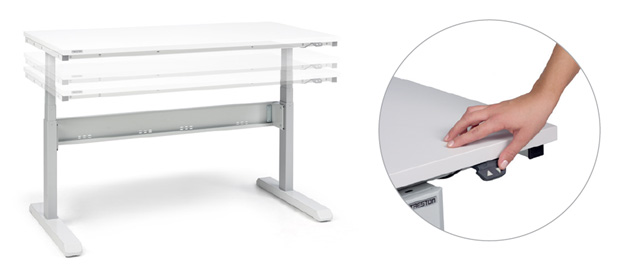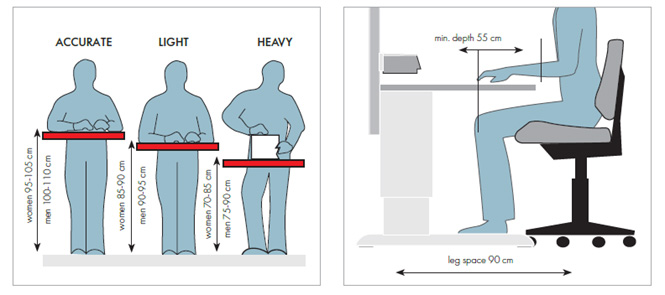How To Choose the Right Adjustable Workbench
TestEquity is an approved distributor for Treston.
Content Source: https://www.treston.us/blog/how-choose-right-adjustable-workbench
Varying the working posture during the day is an essential part of proper workplace ergonomics, neither sitting nor standing alone is optimal. The latest cognitive research has demonstrated the benefits of regularly varying your working posture and according to the research results, even small movements, such as standing up occasionally, can help improve your memory, attentiveness, learning and overall cognitive performance.
In this article, we’ll guide you through the choosing process of an adjustable industrial workbench.

Should the workbench be designed for sitting or standing?
The choice of a seated or standing working posture is dependent upon the task to be executed. The height of the work surface is determined by such factors as size and weight of the part, precision requirement, assembly process, repetitiveness etc. Height adjustability is especially useful when the size of the products being handled varies or when several people use the same workstation.
If tasks require paperwork, typing, no heavy lifting, and/or all tools for the job are provided in arm’s reach, then the workstation should be designed for sitting, but with possibility to stand.
“Don’t forget the opportunity to rest, especially during heavy work.”
If tasks require lifting heavy loads, continuous movement, parts retrieval, and/or there is no leg space, then the workstation should be designed for standing but with the possibility to rest every now and then, whenever possible.
General guidelines for the choice of the posture
| Task | Primary Choice | Secondary Choice |
| Lifting the weight of over 11 lbs | Standing | Semi-sitting* |
| Working below the elbow level | Standing | Semi-sitting* |
| Need to reach widely in horizontal level | Standing | Semi-sitting* |
| Light assembly work | Sitting | Semi-sitting* |
| Precision work | Sitting | Semi-sitting* |
| Visual monitoring or supervising | Sitting | Semi-sitting* |
| Need to move between workstations | Semi-sitting* | Standing |

What is the optimal working height for a workbench?
When sitting, a desk surface should typically be 25″ to 30″ high for writing and typing and can be positioned as much as 10″ higher if tasks demand an elevated platform. Depending on personal preference, the surface should offer the versatility to be lowered 2″ to accommodate for body size.
When standing, the desk should be 30″ to 45″ high, and, once again, able to adjust to 2″ lower if needed. The adjustments here are critical so as to cater to various heights and body types. Ensure it’s comfortable to rest arms, reach products, or see a monitor. Most often it’s good to avoid overly large or deep workbenches. One option is to favor customized tables.
Consider the individual differences of industrial work
It’s important to remember that ergonomics does not create a rigid solution for one particular person. Most production teams have a diverse set of workers. Different physiques, arm length, abilities, skill levels and vision strength have to be accommodated. True ergonomically friendly work environments are made in such a way to offer flexibility, adjustability and customization. That means the strongly-built, 6’5’’ male worker may be at the same workstation during one shift as a petite, slender, 5’2’’ female worker was in another. Ergonomic solutions recognize this and offer a solution that can accommodate all body-types.



